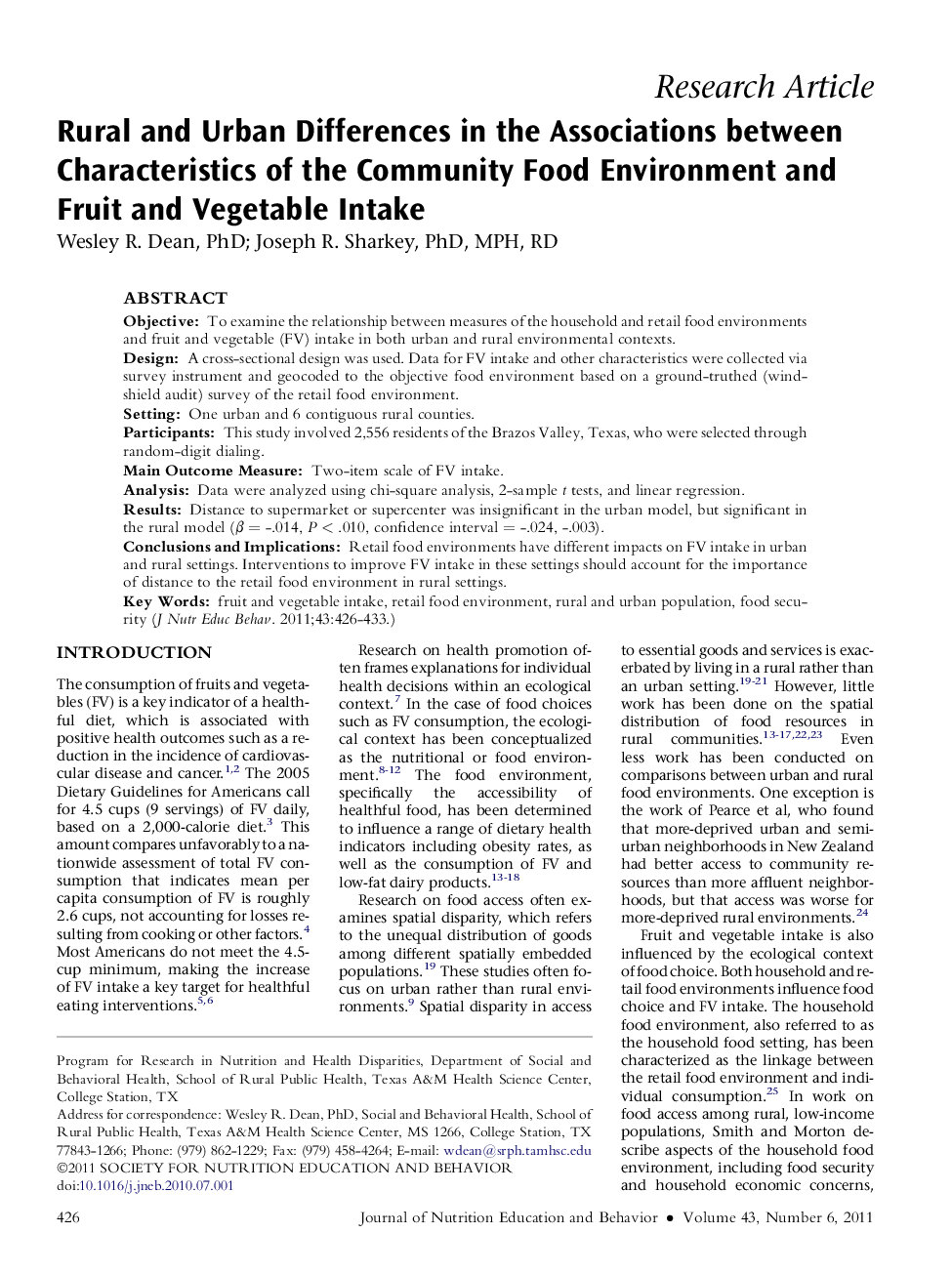| Article ID | Journal | Published Year | Pages | File Type |
|---|---|---|---|---|
| 361760 | Journal of Nutrition Education and Behavior | 2011 | 8 Pages |
ObjectiveTo examine the relationship between measures of the household and retail food environments and fruit and vegetable (FV) intake in both urban and rural environmental contexts.DesignA cross-sectional design was used. Data for FV intake and other characteristics were collected via survey instrument and geocoded to the objective food environment based on a ground-truthed (windshield audit) survey of the retail food environment.SettingOne urban and 6 contiguous rural counties.ParticipantsThis study involved 2,556 residents of the Brazos Valley, Texas, who were selected through random-digit dialing.Main Outcome MeasureTwo-item scale of FV intake.AnalysisData were analyzed using chi-square analysis, 2-sample t tests, and linear regression.ResultsDistance to supermarket or supercenter was insignificant in the urban model, but significant in the rural model (β = -.014, P < .010, confidence interval = -.024, -.003).Conclusions and ImplicationsRetail food environments have different impacts on FV intake in urban and rural settings. Interventions to improve FV intake in these settings should account for the importance of distance to the retail food environment in rural settings.
